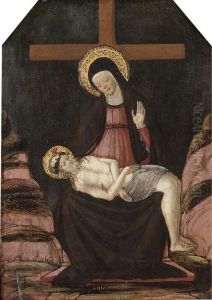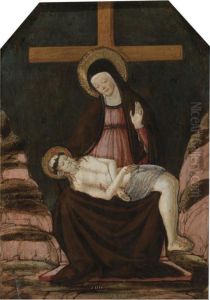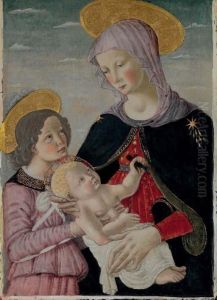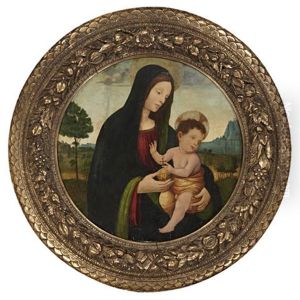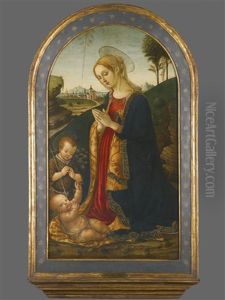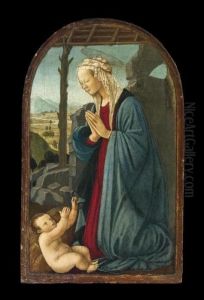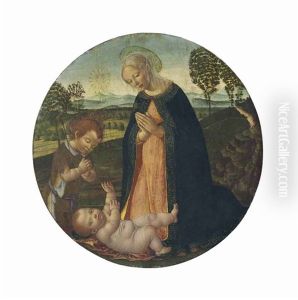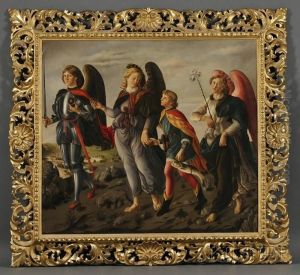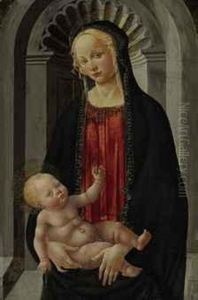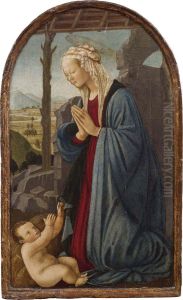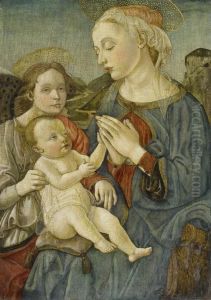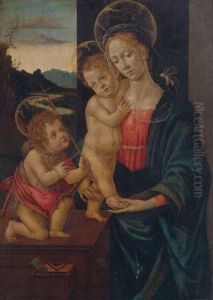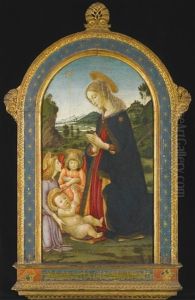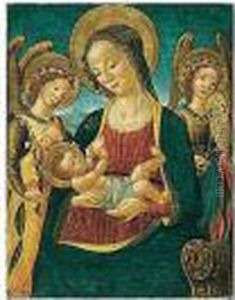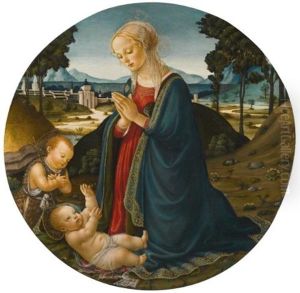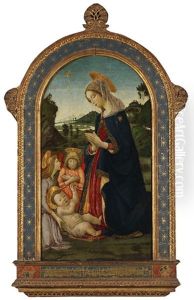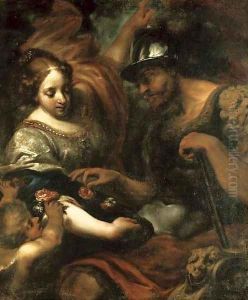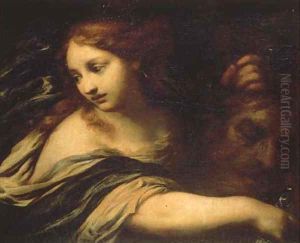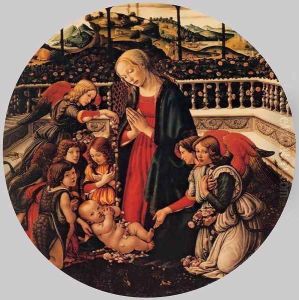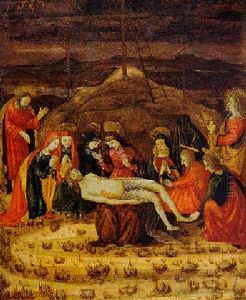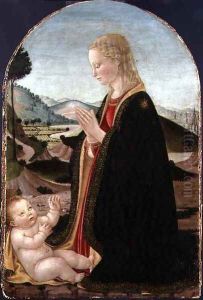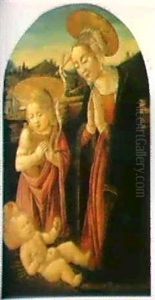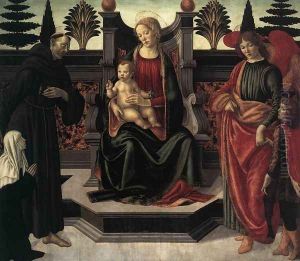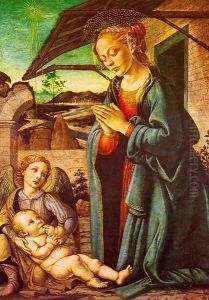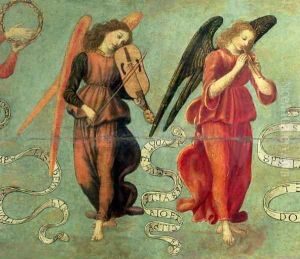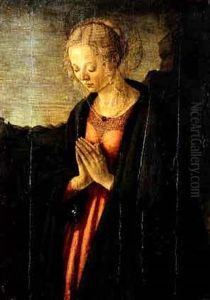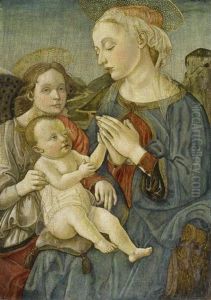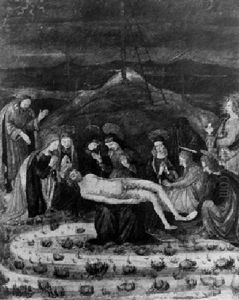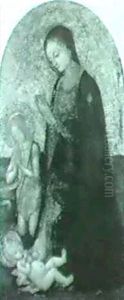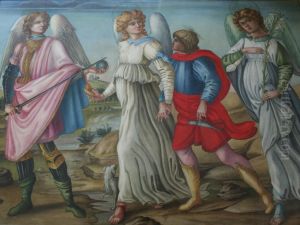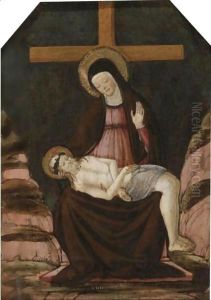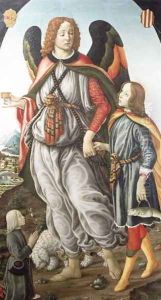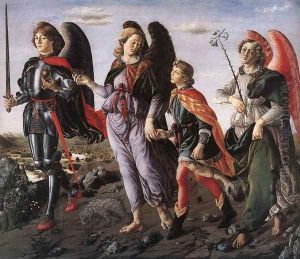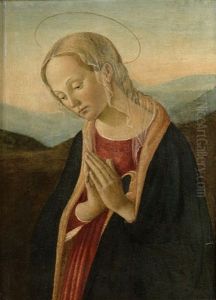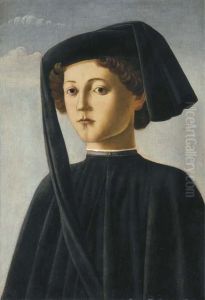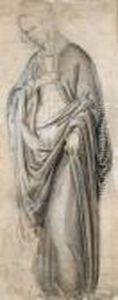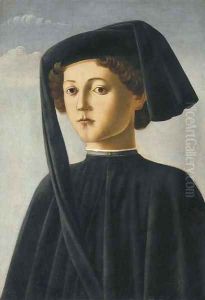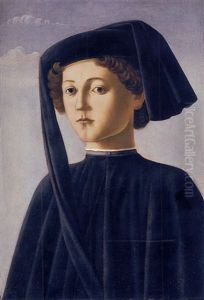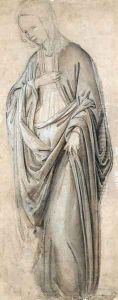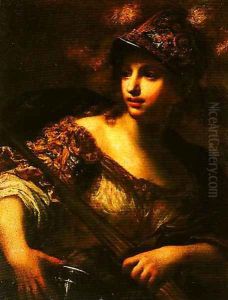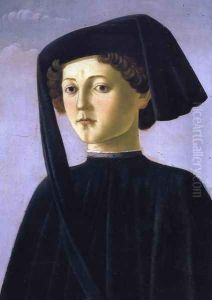Francesco Botticini Paintings
Francesco Botticini was an Italian painter of the Early Renaissance period, born in Florence in 1446. Botticini was initially trained by his father, Giovanni di Domenico, and later apprenticed under the renowned Florentine painter Neri di Bicci. His style was also influenced by the works of Sandro Botticelli, which is evident in his use of color and composition.
Botticini's work is characterized by its delicate figures and detailed landscapes, often incorporating architectural elements that showcase perspective. His religious paintings, which include altarpieces and frescoes for various churches in Florence and its surrounding areas, are marked by graceful expression and narrative clarity.
One of Botticini's most famous works is the 'Assumption of the Virgin', which was completed for the church of San Pier Maggiore in Florence. This large panel painting is noted for its intricate portrayal of the heavens above the Virgin, filled with a host of angels and saints, as well as the detailed landscape below.
Aside from religious paintings, Botticini also painted mythological subjects and was known for his portraiture. His portraits display a keen attention to detail and a strong sense of individual personality, which was a significant step towards the High Renaissance style of portraiture.
Botticini's contributions to art were not limited to his paintings. He also founded a workshop in Florence, which became a center for training artists. His influence extended through his students, who carried on his techniques and stylistic preferences. Despite his talents, Botticini has often been overshadowed by his contemporaries, and only in recent studies has his work been given more attention.
Francesco Botticini's career spanned a crucial period in the development of Renaissance art, and he played a role in the transition from the Early to the High Renaissance. He passed away in 1497, leaving behind a body of work that continues to be appreciated for its beauty and historical significance.
